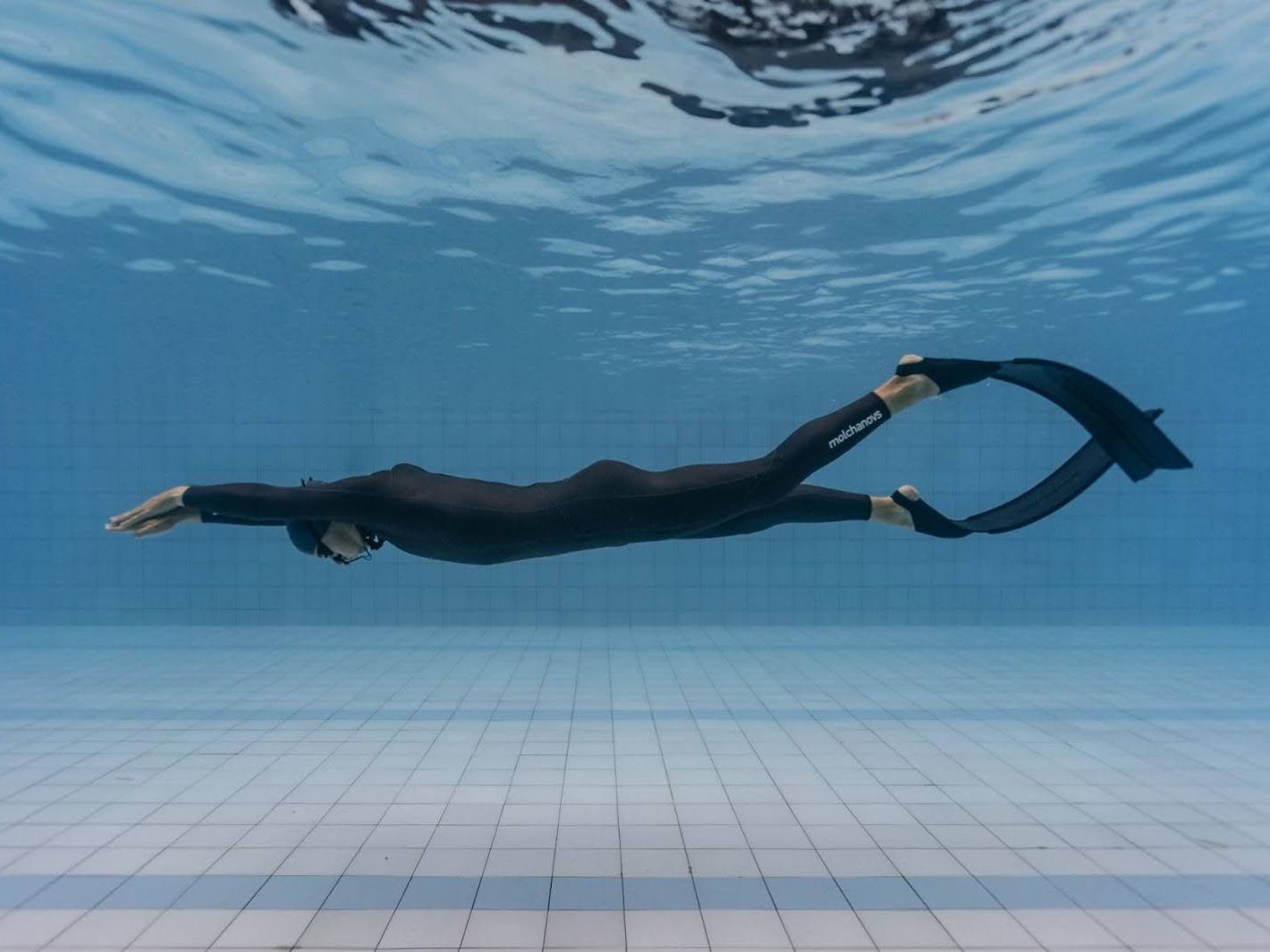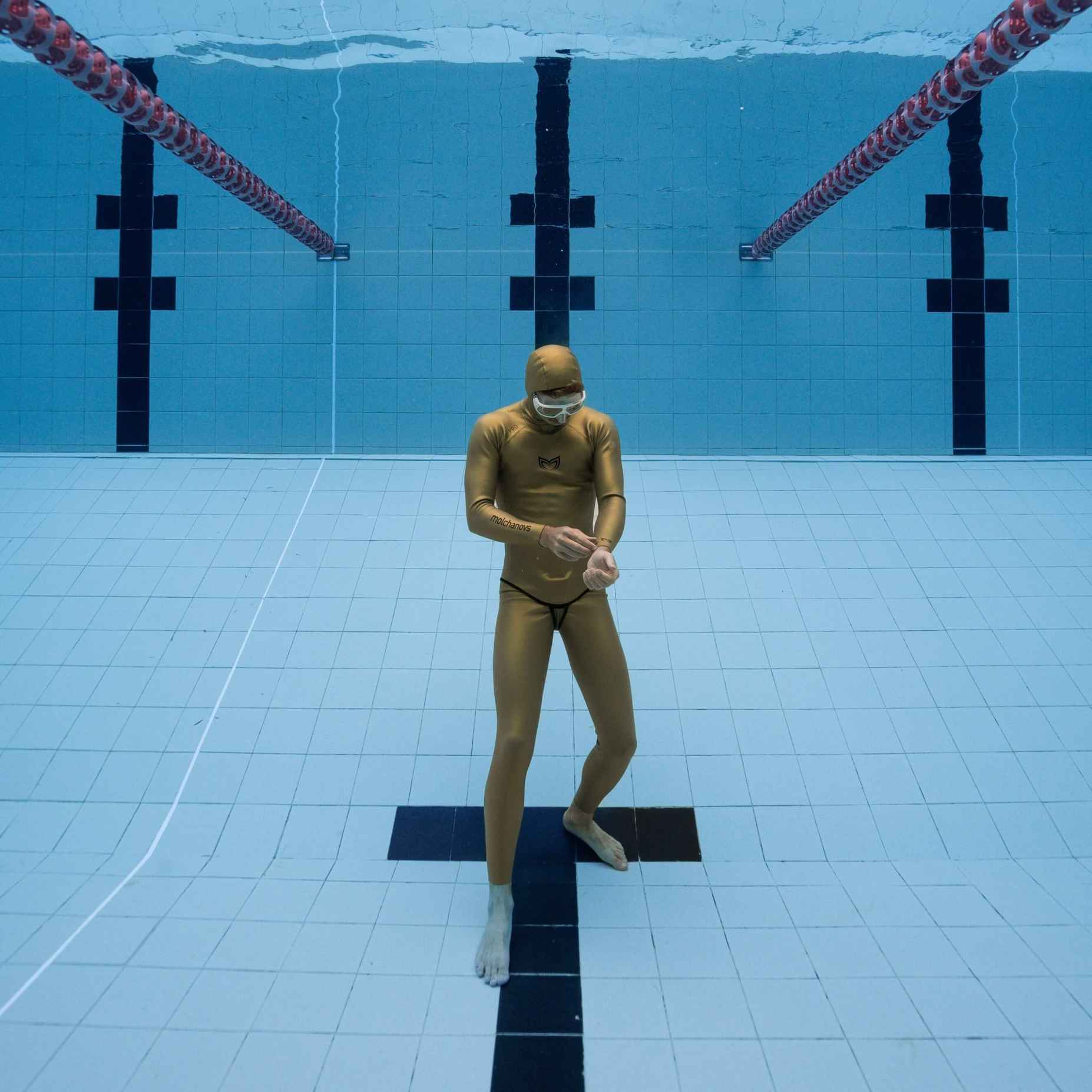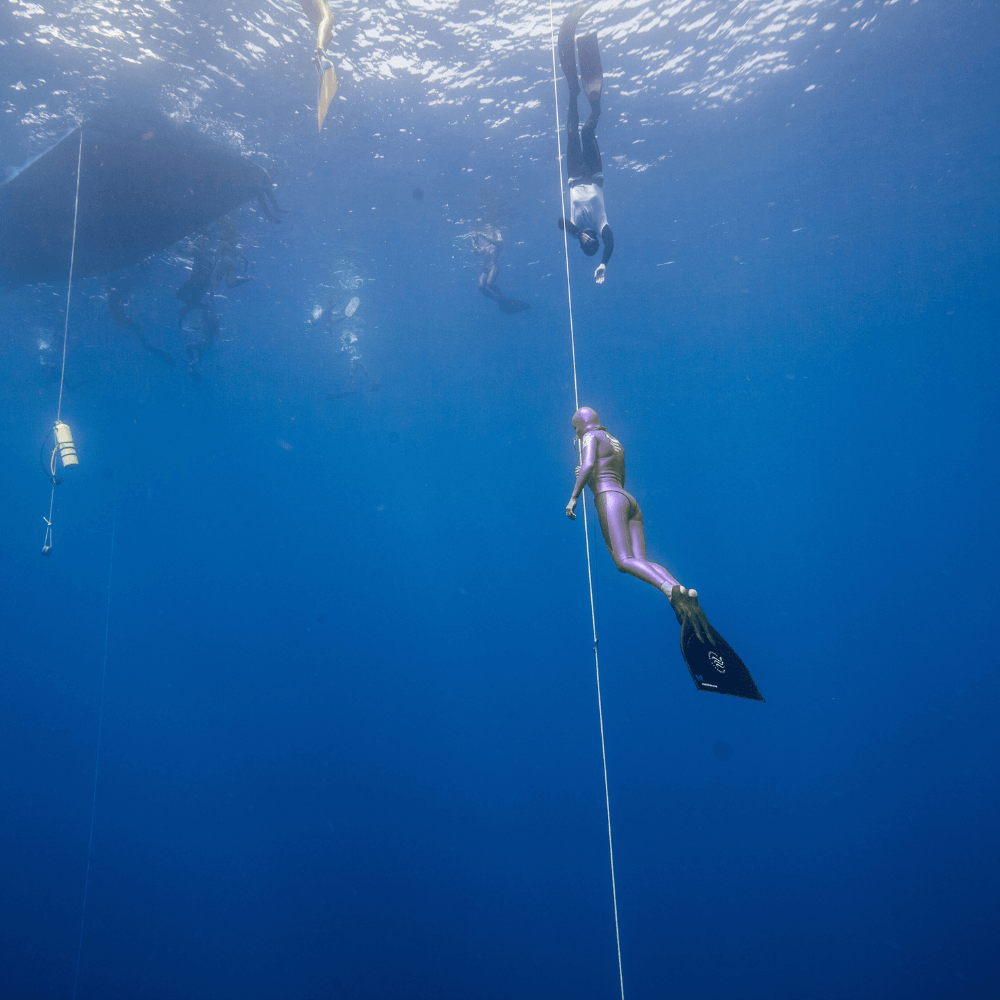Dive Into The Intense World Of Pool Freediving

While depth freediving gets a lot of the spotlight from mainstream media, the pool is truly where mental strength meets physical limits.
By Kristina Zvaritch
Photo © @diver.aidan @mitchfreediver
Remember when you were young and playing at the swimming pool, trying to see how far you could dive on a single breath? Adults do it, too!
In pool freediving, the objective is to hold your breath for as long as possible, whether you’re stationary at the surface or swimming as far a distance as possible on a single breath. Both freediving record-governing organizations AIDA and CMAS have pool world championships every year, and the records are astonishing! Women’s records include performances of 250m+ (820ft+) while men’s include 300m+ (984ft+) distances.
Yet interestingly enough, depth freediving is what makes the most appearances on the news and social media. But pool freediving definitely deserves its own spotlight. Imagine feeling the urge to breathe, and then just having to deal with it for the next two to five minutes or 150m (492ft) of swimming when you can easily come up to the surface. Talk about self-discipline!
Learn More About Pool Freediving Disciplines
Static Apnea (STA)
Static Apnea (STA) involves holding one’s breath for as long as possible while floating on the surface of a pool. While this discipline may appear to have not much action going on from an outsider’s perspective, being inside the athlete’s head is a different story. Dealing with contractions without having technique or movement to focus on is hard, so athletes have to develop a serious mental strategy to reach long breath-holds.
The world records in STA are over 9 minutes for women and over 11 minutes for men.
 Static Apnea: where every second is earned through mental discipline.
Static Apnea: where every second is earned through mental discipline.Photo © @junglefreediver_diver @lizaulanova @philabroad
Dynamic with Fins (DYN)
In Dynamic with Fins (DYN), freedivers wear fins to swim in a pool for distance, all on a single breath. This is the discipline that churns out the biggest numbers in pool freediving. Since bifins have their own discipline (more on DYNB below), athletes typically use a monofin in DYN as they have a large surface area, helping freedivers achieve the furthest, most unimaginable distances in pool freediving.
DYN world records stand at over 280m (919ft) for women and over 300m (984ft) for men.
Dynamic with Bifins (DYNB / DYN-BF)
Dynamic with Bifins (DYNB in AIDA and DYN-BF in CMAS) involves athletes wearing bifins to swim as far a distance as possible on a single breath. With bifins, freedivers can only use the flutter kick technique to propel themselves–dolphin kicks are strictly prohibited, which can be tricky for athletes who train both DYN and DYNB/DYN-BF!
The world’s best performances are almost 250m (820ft) for women and 300m (984ft) for men.
Dynamic without Fins (DNF)
Dynamic without Fins (DNF) sees athletes propelling themselves as far as they can in the pool with arm strokes and leg kicks – all without fins and on one breath. This is a truly difficult discipline, and distances are always shorter than other dynamic disciplines because moving both arms and legs burns oxygen quicker.
However, DNF world records are impressively high: over 200m (656ft) for women and 250m (820ft) for men.
 DYN - Dynamic with Fins.
DYN - Dynamic with Fins.
Speed-Endurance Apnea (CMAS-only Discipline)
Speed-Endurance Apnea is a CMAS-only discipline with 3 variations: 2x50m, 4x50m, and 8x50m. In each variation, athletes must swim the specified distance as fast as possible, recovery breathing at will at the end of the pool lane. This is a true test of speed and endurance, as a delicate balance must be found between the two so that athletes don’t exceed their limits.
Jump Blue (CMAS-only Discipline)
Jump Blue was a CMAS-only discipline that was discontinued in 2017. It was an interesting mix of depth and dynamic; in open water, athletes dove down between 5 – 15m (16 – 49ft), arriving next to a giant floating cube made of ropes. They had to swim horizontally around the cube’s perimeter, a distance of 15m on each side, for as long of a distance as possible. Monofins were mostly used, but bifins were also allowed; however, due to safety concerns, today, the discipline is no more!
Ready To Jump In The Pool?
Now you understand a little more about the world of pool freediving and how different it is from depth. Remember that not only do pool athletes have to perform through a serious urge to breathe for most of their dive, but they also don’t have a set distance to reach – meaning they really have to understand their limits to avoid exceeding them! Pool freediving is truly about finding balance in your diving.
Pool freediving is more accessible to freedivers around the world than depth! While it can be tough to find somewhere near you that has depth and good conditions for diving, pools are much easier to locate. Before attempting to freedive in a pool, make sure the facility allows freedivers to train there. Most importantly: before you start swimming below the surface, ensure you’ve taken a freediving course (Molchanovs offers pool/depth freediving courses and pool-only courses. Find an instructor near you). Kids can learn freediving too with Molchanovs Junior courses!
Above all, remember: safety is the number one priority in freediving. Never attempt any in-water training alone – always have a certified buddy with you.
Want to learn more about pool freediving? Subscribe to our newsletter for the latest news and deeper insights into the world of freediving.




Leave a comment